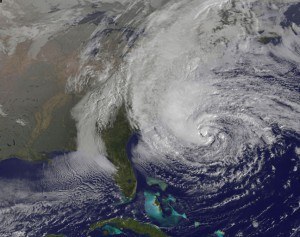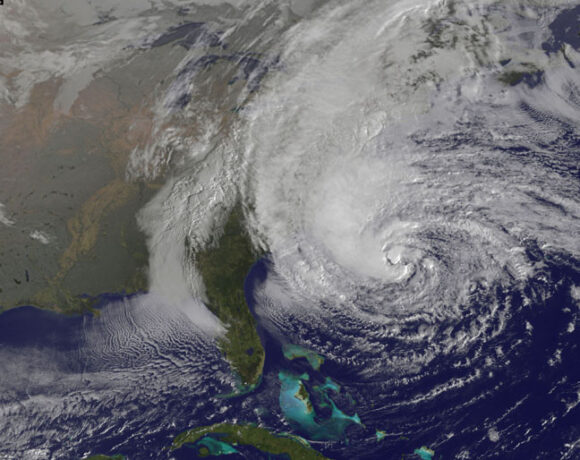Insurers say they are making the usual preparations for a hurricane – activating claims teams, staging adjusters near the locations most likely to be affected and generally getting ready to pay for a potentially huge volume of losses.
“We plan for weather events such as this, so we feel well prepared with resources strategically positioned to quickly assist customers who may be impacted,” Travelers spokesman Matthew Bordonaro said in an early Sunday e-mail.
Travelers is the third-largest insurer in New York for both personal home and auto and commercial lines of insurance, and the second-largest in Connecticut.
Bordonaro said the company had also activated continuity plans for its own employees, so it can sustain operations despite having staff clustered in New York and Hartford.
Had Sandy hit in 2011, it may have been more of a problem for the insurance industry, which dealt with record-breaking losses around the world last year, mostly from U.S. tornadoes and Asia-Pacific earthquakes.
But in 2012, most insurers’ disaster losses are down substantially, leaving them with more capacity to absorb the billions of dollars in costs some expect from Hurricane Sandy.

“In terms of losses, I certainly don’t think it’s going to be the largest loss of the last 100 years,” Tom Larsen, senior vice president of Eqecat, said in an interview late Friday. “It’s not an end-of-days scenario.”
Chubb Corp, another of the major insurers in the Northeast, said early Sunday that it has been working for days to move staff around so they are positioned to respond.
Weather is unlikely to interfere with claims processing, a spokesman said, even though the company is headquartered in New Jersey, Chubb has a major center in Arizona that can handle claims as needed.
State Farm, the country’s largest home and auto insurer and the market leader in New York and New Jersey, said late Saturday it had agents and catastrophe teams on standby waiting for Sandy’s arrival.
“We’ll be ready to handle claims as soon as the storm hits,” a spokeswoman said.
Allstate, which trails close behind State Farm in the home and auto market, said it was placing its catastrophe response teams in North Carolina, Pennsylvania and Virginia to be able to respond more quickly after the storm.
A spokeswoman said the company is also urging its insured customers to heed evacuation orders, having found in a study earlier this year that more than one in four would ignore those orders until the last possible moment.
For most private insurers, the biggest impact from Sandy is likely to be wind damage to roofs and cars, as well as business losses from prolonged power outages.
But the brunt of the storm’s financial impact may end up falling on the National Flood Insurance Program, which is responsible for almost all flood coverage in the country.
A unit of the Federal Emergency Management Agency, the NFIP paid out $1.28 billion in losses last year from Irene, making it the fourth-costliest flood event of the last generation.
(Reporting By Ben Berkowitz; Editing by Jennifer Merritt and Maureen Bavdek)
Was this article valuable?
Here are more articles you may enjoy.


 Bankruptcy Judge Shoots Down $10 Billion J&J Settlement
Bankruptcy Judge Shoots Down $10 Billion J&J Settlement  CBS Poised to Lose Bid to Stop Sony Taking ‘Jeopardy’ Rights
CBS Poised to Lose Bid to Stop Sony Taking ‘Jeopardy’ Rights  Ireland and UK Face High Wildfire Risks After Dry, Warm Weather
Ireland and UK Face High Wildfire Risks After Dry, Warm Weather  Trump’s Tariffs Send Deliberate Shock to Heart of Global Economy
Trump’s Tariffs Send Deliberate Shock to Heart of Global Economy 